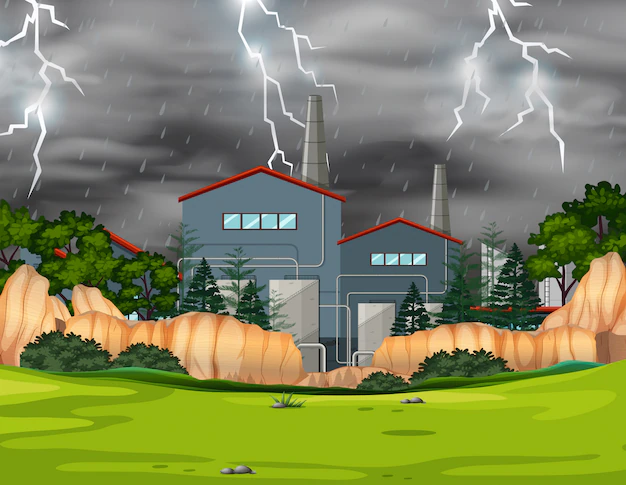Unleashing Creativity and Exploration: 30 Exciting Activities for Outdoor Learning
Page Contents
- 1 Introduction
- 2 30 Exciting Activities for Outdoor Learning for Unleashing Creativity
- 2.1 1. Nature Scavenger Hunts:
- 2.2 2. Sensory Stations:
- 2.3 3. Outdoor Art and Nature Crafts:
- 2.4 4. Planting and Gardening:
- 2.5 5. Bird Watching and Nature Observation:
- 2.6 6. Weather Studies and Sky Observations:
- 2.7 7. Storytelling and Outdoor Reading:
- 2.8 8. Science Experiments and Investigations:
- 2.9 9. Building and Engineering Challenges:
- 2.10 10. Nature Journaling and Reflection:
- 2.11 11. Outdoor Music and Movement:
- 2.12 12. Citizen Science Projects:
- 2.13 13. Bug Hunting and Insect Investigations:
- 2.14 14. Nature-Based Math Games:
- 2.15 15. Pond Dipping and Water Exploration:
- 2.16 16. Outdoor Cooking and Food Experiences:
- 2.17 17. Shadow Tracing and Sundial Making:
- 2.18 18. Animal Tracking and Nature Detective Games:
- 2.19 19. Cloud Watching and Sky Art:
- 2.20 20. Nature Photography and Journaling:
- 2.21 21. Sensory Nature Walks:
- 2.22 22. Outdoor walking and Mindfulness:
- 2.23 23. Bird Feeding and Birdhouse Building:
- 2.24 24. Leaf and Tree Identification:
- 2.25 25. Rock Painting and Story Stones:
- 2.26 26. Miniature Nature Sculptures:
- 2.27 27. Environmental Cleanup and Conservation Projects:
- 2.28 28. Outdoor Theater and Role-Playing:
- 2.29 29. Nature-Based Science Obstacle Courses:
- 2.30 30. Nature Listening and Sound Mapping:
- 3 Conclusion
Introduction
Outdoor learning offers a plethora of opportunities for children to engage with the natural world while fostering a sense of wonder, curiosity, and exploration. From scientific investigations to artistic expression, here are various activities and engaging ideas that educators and parents can utilize to make outdoor learning experiences both educational and enjoyable.

Engage in simple gardening, mindfulness walking, craft mindfulness, deep seeing exercise, art-based therapy, or mindfulness exercises outdoors. Encourage children to connect with nature, practice breathing exercises, and relax in the natural environment.
30 Exciting Activities for Outdoor Learning for Unleashing Creativity
1. Nature Scavenger Hunts:
Create scavenger hunt lists tailored to the outdoor environment. Children can search for specific leaves, rocks, insects, or natural objects, fostering observation skills and environmental awareness.
2. Sensory Stations:
Set up sensory stations with different materials like sand, water, mud, leaves, or pinecones. Allow children to explore and manipulate these materials, engaging their senses and encouraging imaginative play.
3. Outdoor Art and Nature Crafts:
Encourage artistic expression using natural materials found outdoors. Children can create nature collages, leaf rubbings, bark paintings, or rock sculptures, fostering creativity and connection with the environment.
4. Planting and Gardening:
Engage children in planting seeds, tending to gardens, or creating nature-based art installations using plants. This hands-on experience instills a sense of responsibility and nurtures a connection to nature.
5. Bird Watching and Nature Observation:
Provide binoculars and bird guides for children to observe birds and wildlife. Encourage them to record their observations in nature journals, promoting curiosity and scientific inquiry.
6. Weather Studies and Sky Observations:
Explore weather patterns, clouds, or phases of the moon. Children can track weather changes, conduct experiments, or engage in sky observations, fostering an understanding of natural phenomena.
7. Storytelling and Outdoor Reading:
Create a storytelling circle or set up an outdoor reading nook. Share nature-themed stories, poems, or books to inspire imagination and develop literacy skills.
8. Science Experiments and Investigations:
Conduct science experiments related to the natural environment. Study soil composition, water cycles, or plant growth, encouraging inquiry-based learning and scientific discovery.
9. Building and Engineering Challenges:
Provide materials like sticks, rocks, or recycled items for building structures, forts, or natural art installations. Engage children in engineering challenges, promoting problem-solving and creativity.
10. Nature Journaling and Reflection:
Encourage children to maintain nature journals to document observations, sketches, or reflections during outdoor experiences. Journaling fosters reflection and enhances observational skills.
11. Outdoor Music and Movement:
Explore rhythmic activities or engage in nature-inspired music and movement sessions. Create sounds using natural materials or engage in dance and movement activities outdoors.
12. Citizen Science Projects:
Participate in citizen science projects such as counting birds, monitoring wildlife, or recording weather data. Engaging in real scientific projects fosters a sense of contribution to the larger scientific community.
13. Bug Hunting and Insect Investigations:
Explore the world of insects by searching for bugs, observing their behavior, or creating temporary habitats. Children can learn about insect diversity, life cycles, and ecosystems.
14. Nature-Based Math Games:
Utilize natural materials like sticks, rocks, or pinecones for math activities. Children can practice counting, sorting, measuring, or creating shapes, integrating math into outdoor play.
15. Pond Dipping and Water Exploration:
Visit ponds or streams for pond dipping activities. Children can use nets to explore aquatic life, observe water creatures, and learn about aquatic ecosystems.
16. Outdoor Cooking and Food Experiences:
Engage in simple outdoor cooking activities like making mud pies, cooking over a campfire, or planting and harvesting vegetables to learn about food sources and nutrition.
17. Shadow Tracing and Sundial Making:
Trace shadows at different times of the day or create sundials using natural materials. Children learn about the movement of the sun and the concept of time.
18. Animal Tracking and Nature Detective Games:
Study animal tracks and signs, allowing children to play nature detective games, follow tracks, and guess which animals left their marks.
19. Cloud Watching and Sky Art:
Lie down on the grass and observe cloud formations. Children can use clouds as inspiration for creating artwork or storytelling.
20. Nature Photography and Journaling:
Provide cameras or smartphones for children to capture photos of natural elements. Encourage them to document their experiences in nature journals using photographs and reflections.
21. Sensory Nature Walks:
Take sensory nature walks, focusing on different senses during each walk. Encourage children to touch, smell, listen, and observe the surroundings closely.
22. Outdoor walking and Mindfulness:
Engage in simple gardening, mindfulness walking, craft mindfulness, deep seeing exercise, art-based therapy, or mindfulness exercises outdoors. Encourage children to connect with nature, practice breathing exercises, and relax in the natural environment.
23. Bird Feeding and Birdhouse Building:
Create bird feeders or build birdhouses to attract birds. Children can learn about bird habitats, behavior, and the importance of caring for wildlife.
24. Leaf and Tree Identification:
Explore trees and leaves by identifying different species. Children can learn about tree characteristics, leaf shapes, and the role of trees in the ecosystem.
25. Rock Painting and Story Stones:
Decorate rocks or create story stones with painted images. Use these stones for storytelling or as part of imaginative play.
26. Miniature Nature Sculptures:
Using clay or natural materials, create miniature sculptures inspired by nature. This activity encourages creativity and appreciation for natural forms.
27. Environmental Cleanup and Conservation Projects:
Organize environmental cleanup activities or conservation projects in outdoor spaces. Children learn about the importance of caring for the environment.
28. Outdoor Theater and Role-Playing:
Create outdoor theaters or engage in role-playing activities inspired by nature. Children can act out stories or create their own nature-themed plays.
29. Nature-Based Science Obstacle Courses:
Design science-themed obstacle courses using natural materials. Incorporate elements related to physics, biology, or environmental science.
30. Nature Listening and Sound Mapping:
Listen to natural sounds and create sound maps. Children can identify and map different sounds they hear in outdoor environments.
Conclusion
Engaging children in a variety of outdoor learning activities expands their knowledge, fosters curiosity, and encourages a deeper connection with the natural world. These diverse ideas promote exploration, creativity, and learning opportunities, creating memorable experiences that inspire a lifelong appreciation for nature and outdoor exploration.
Outdoor learning activities provide diverse opportunities for children to engage with nature, fostering a sense of curiosity, creativity, and connection. By incorporating these activities into educational settings, educators and parents can create enriching and memorable experiences that promote learning, exploration, and appreciation for the natural world. Outdoor learning not only supports academic growth but also nurtures holistic development in children, fostering a lifelong love for nature and learning.







